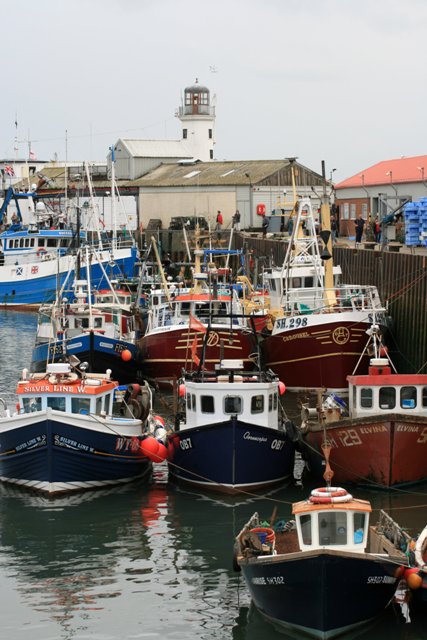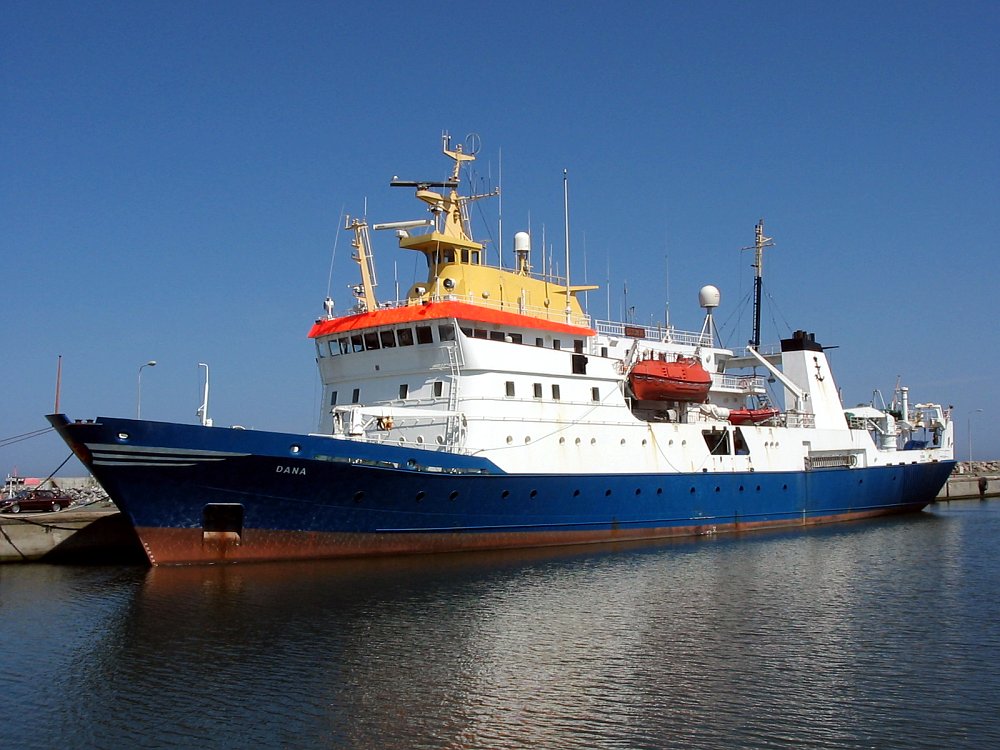|
EconSimp
EconSimp is a Bioeconomics (fisheries), bioeconomic fisheries management, management model (abstract), model of the Barents Sea fisheries.Eide, A., 1991. ECONSIMP, Econmult-beregninger basert pa biologimodellen Multsimp. Working paper. In Norwegian, June 1991. Norges Fiskerih!2igskole. TromS!2i, 36 pp. It consists of two modules modelling respectively the Barents Sea ecosystem and the Norway, Norwegian fishing fleet, fleet structure and activity. The ecosystem module is the multispecies model Aggmult developed at the Norwegian Institute of Marine Research and the fleet module is EconMult. References Fisheries science Barents Sea Conceptual models {{Ecology-stub ... [...More Info...] [...Related Items...] OR: [Wikipedia] [Google] [Baidu] |
EconMult
EconMult is a general fleet model to be used in fisheries modelling. EconMult has been developed since 1991 as a part of the Multispecies management programme by the Norwegian Research Council at the Norwegian College of Fishery Science (University of Tromsø, Norway). Model resolution and key variables EconMult is a discrete time simulation model where the fleet activity is controlled by two variables: ''Number of vessels (v)'' (within each fleet segment) and ''Number of fishing days d)'' (within each time interval). ''The biomass units'' (''x'') are exogenous variables. The model resolution is determined by four structural variables: ''Number of fleet groups j)'', ''Number of targeted species n)'', ''Number of biomass units i)'' (which may be more than one within each targeted species) and ''Period length'' (time step in the simulation). The number of vessels and fishing days therefore are presented in fleet (columns)-targeted species (rows) matrices, while the biomass units is ... [...More Info...] [...Related Items...] OR: [Wikipedia] [Google] [Baidu] |
Bioeconomics (fisheries)
Bioeconomics is closely related to the early development of theories in fisheries economics, initially in the mid-1950s by Canadian economists Scott Gordon (in 1954) and Anthony Scott (1955). Their ideas used recent achievements in biological fisheries modelling, primarily the works by Schaefer in 1954 and 1957 on establishing a formal relationship between fishing activities and biological growth through mathematical modelling confirmed by empirical studies, and also relates itself to ecology and the environment and resource protection. These ideas developed out of the multidisciplinary fisheries science environment in Canada at the time. Fisheries science and modelling developed rapidly during a productive and innovative period, particularly among Canadian fisheries researchers of various disciplines. Population modelling and fishing mortality were introduced to economists, and new interdisciplinary modelling tools became available for the economists, which made it possible to e ... [...More Info...] [...Related Items...] OR: [Wikipedia] [Google] [Baidu] |
Fisheries Management
The goal of fisheries management is to produce sustainable biological, environmental and socioeconomic benefits from renewable aquatic resources. Wild fisheries are classified as renewable when the organisms of interest (e.g., fish, shellfish, amphibians, reptiles and marine mammals) produce an annual biological surplus that with judicious management can be harvested without reducing future productivity. Fishery management employs activities that protect fishery resources so sustainable exploitation is possible, drawing on fisheries science and possibly including the precautionary principle. Modern fisheries management is often referred to as a governmental system of appropriate environmental management rules based on defined objectives and a mix of management means to implement the rules, which are put in place by a system of monitoring control and surveillance. A popular approach is the ecosystem approach to fisheries management. According to the Food and Agriculture Organi ... [...More Info...] [...Related Items...] OR: [Wikipedia] [Google] [Baidu] |
Model (abstract)
A conceptual model is a representation of a system. It consists of concepts used to help people know, understand, or simulate a subject the model represents. In contrast, physical models are physical object such as a toy model that may be assembled and made to work like the object it represents. The term may refer to models that are formed after a conceptualization or generalization process. Conceptual models are often abstractions of things in the real world, whether physical or social. Semantic studies are relevant to various stages of concept formation. Semantics is basically about concepts, the meaning that thinking beings give to various elements of their experience. Overview Models of concepts and models that are conceptual The term ''conceptual model'' is normal. It could mean "a model of concept" or it could mean "a model that is conceptual." A distinction can be made between ''what models are'' and ''what models are made of''. With the exception of iconic models, su ... [...More Info...] [...Related Items...] OR: [Wikipedia] [Google] [Baidu] |
Barents Sea
The Barents Sea ( , also ; no, Barentshavet, ; russian: Баренцево море, Barentsevo More) is a marginal sea of the Arctic Ocean, located off the northern coasts of Norway and Russia and divided between Norwegian and Russian territorial waters.World Wildlife Fund, 2008. It was known among Russians in the Middle Ages as the Murman Sea ("Norse Sea"); the current name of the sea is after the historical Netherlands, Dutch navigator Willem Barentsz. The Barents Sea is a rather shallow Continental shelf, shelf sea, with an average depth of , and it is an important site for both fishing and hydrocarbon exploration.O. G. Austvik, 2006. It is bordered by the Kola Peninsula to the south, the shelf edge towards the Norwegian Sea to the west, and the archipelagos of Svalbard to the northwest, Franz Josef Land to the northeast and Novaya Zemlya to the east. The islands of Novaya Zemlya, an extension of the northern end of the Ural Mountains, separate the Barents Sea from the Kar ... [...More Info...] [...Related Items...] OR: [Wikipedia] [Google] [Baidu] |
Fisheries
Fishery can mean either the enterprise of raising or harvesting fish and other aquatic life; or more commonly, the site where such enterprise takes place ( a.k.a. fishing ground). Commercial fisheries include wild fisheries and fish farms, both in freshwater waterbodies (about 10% of all catch) and the oceans (about 90%). About 500 million people worldwide are economically dependent on fisheries. 171 million tonnes of fish were produced in 2016, but overfishing is an increasing problem — causing declines in some populations. Because of their economic and social importance, fisheries are governed by complex fisheries management practices and legal regimes that vary widely across countries. Historically, fisheries were treated with a " first-come, first-served " approach, but recent threats by human overfishing and environmental issues have required increased regulation of fisheries to prevent conflict and increase profitable economic activity on the fishery. Modern jurisdicti ... [...More Info...] [...Related Items...] OR: [Wikipedia] [Google] [Baidu] |
Ecosystem
An ecosystem (or ecological system) consists of all the organisms and the physical environment with which they interact. These biotic and abiotic components are linked together through nutrient cycles and energy flows. Energy enters the system through photosynthesis and is incorporated into plant tissue. By feeding on plants and on one another, animals play an important role in the movement of matter and energy through the system. They also influence the quantity of plant and microbial biomass present. By breaking down dead organic matter, decomposers release carbon back to the atmosphere and facilitate nutrient cycling by converting nutrients stored in dead biomass back to a form that can be readily used by plants and microbes. Ecosystems are controlled by external and internal factors. External factors such as climate, parent material which forms the soil and topography, control the overall structure of an ecosystem but are not themselves influenced by the ecosystem. ... [...More Info...] [...Related Items...] OR: [Wikipedia] [Google] [Baidu] |
Norway
Norway, officially the Kingdom of Norway, is a Nordic country in Northern Europe, the mainland territory of which comprises the western and northernmost portion of the Scandinavian Peninsula. The remote Arctic island of Jan Mayen and the archipelago of Svalbard also form part of Norway. Bouvet Island, located in the Subantarctic, is a dependency of Norway; it also lays claims to the Antarctic territories of Peter I Island and Queen Maud Land. The capital and largest city in Norway is Oslo. Norway has a total area of and had a population of 5,425,270 in January 2022. The country shares a long eastern border with Sweden at a length of . It is bordered by Finland and Russia to the northeast and the Skagerrak strait to the south, on the other side of which are Denmark and the United Kingdom. Norway has an extensive coastline, facing the North Atlantic Ocean and the Barents Sea. The maritime influence dominates Norway's climate, with mild lowland temperatures on the se ... [...More Info...] [...Related Items...] OR: [Wikipedia] [Google] [Baidu] |
Fishing Fleet
A fishing fleet is an aggregate of commercial fishing vessels. The term may be used of all vessels operating out of a particular port, all vessels engaged in a particular type of fishing (as in the "tuna fishing fleet"), or all fishing vessels of a country or region. Although fishing vessels are not formally organized as if they were a naval fleet, very often the constraints of time and weather are such that they must all leave or return together, thus creating at least the appearance of an organized body (some countries, such as the former Soviet Union, did however organise their fishing fleets partially along naval lines and used the ships to also gather naval intelligence). Fishermen operating a particular type of vessel or in a particular port often belong to a local association which disseminates information and may be used to coordinate activities, such as how best to prevent overfishing in particular areas. World fishing fleet In 2002 the world fishing fleet numbered ab ... [...More Info...] [...Related Items...] OR: [Wikipedia] [Google] [Baidu] |
Norwegian Institute Of Marine Research
The Norwegian Institute of Marine Research ( no, Havforskningsinstituttet) is a national consultative research institute which is owned by the Ministry of Fisheries and Coastal Affairs. The institute performs research and provides advisory services in the fields of marine ecosystems and aquaculture. With a staff of almost 1100, the Institute of Marine Research is the largest centre of marine research in Norway, and among the largest in Europe. The institute has a highly qualified scientific staff, high-technology research stations and laboratories in Austevoll, Bergen (head office), Flødevigen (Arendal) and Matre, a department in Tromsø and several vessels. The primary responsibility of the Institute of Marine Research is to provide advice to national authorities, society and industry regarding questions related to the ecosystems of the Barents Sea, the Norwegian Sea, the North Sea and the Norwegian coastal zone and in the field of aquaculture. The institute is heavily engaged i ... [...More Info...] [...Related Items...] OR: [Wikipedia] [Google] [Baidu] |
Fisheries Science
Fisheries science is the academic discipline of managing and understanding fisheries. It is a multidisciplinary science, which draws on the disciplines of limnology, oceanography, freshwater biology, marine biology, meteorology, conservation, ecology, population dynamics, economics, statistics, decision analysis, management, and many others in an attempt to provide an integrated picture of fisheries. In some cases new disciplines have emerged, as in the case of bioeconomics and fisheries law. Because fisheries science is such an all-encompassing field, fisheries scientists often use methods from a broad array of academic disciplines. Over the most recent several decades, there have been declines in fish stocks (populations) in many regions along with increasing concern about the impact of intensive fishing on marine and freshwater biodiversity. Fisheries science is typically taught in a university setting, and can be the focus of an undergraduate, master's or Ph.D. program. Some ... [...More Info...] [...Related Items...] OR: [Wikipedia] [Google] [Baidu] |







